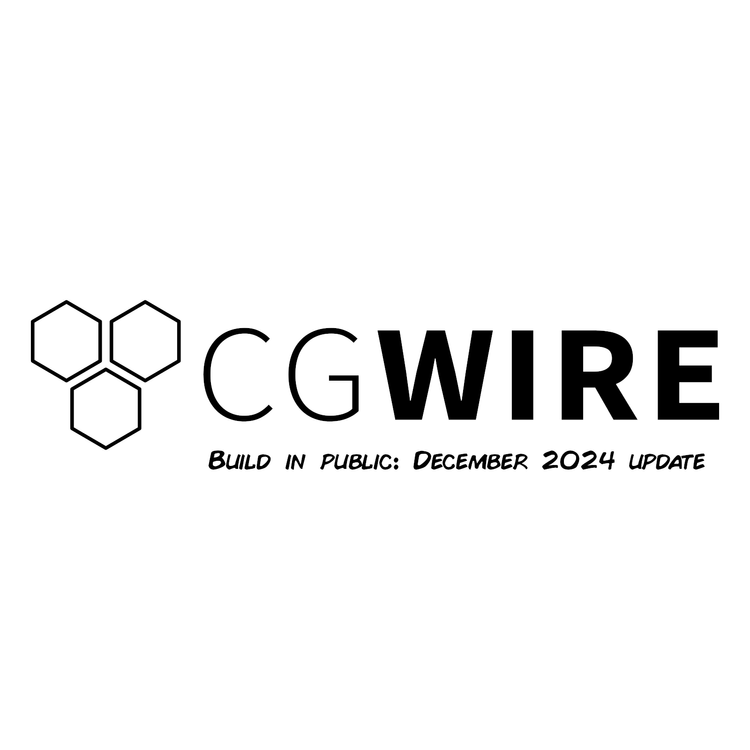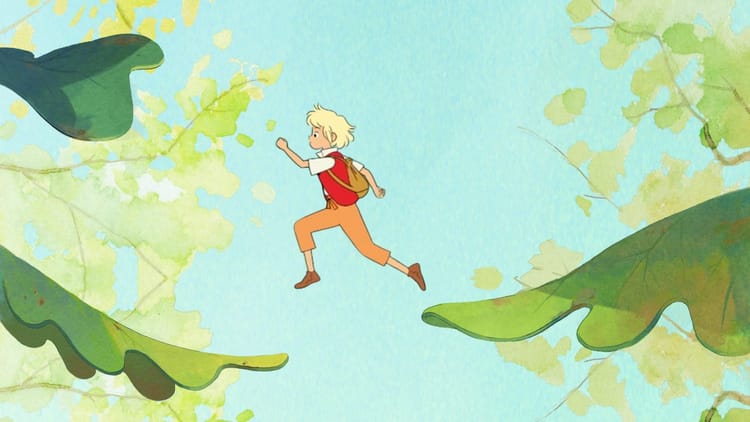Kitsu is our main software at CGWire. It helps studios to deliver high-end content on a tight budget. With our solutions, you can keep track of validations and review every version of each preview. That way, everyone knows what is going on and in real-time. It’s imperative when you’re trying to foster efficient collaboration between different sites and a workforce working from home.
We want you to make better decisions and deliver higher quality, faster. So let’s see how these Kitsu tips can help you do that!
Agree on the nomenclature of assets and shots
1 It’s important to decide on the nomenclature of shots and assets before the production begins.
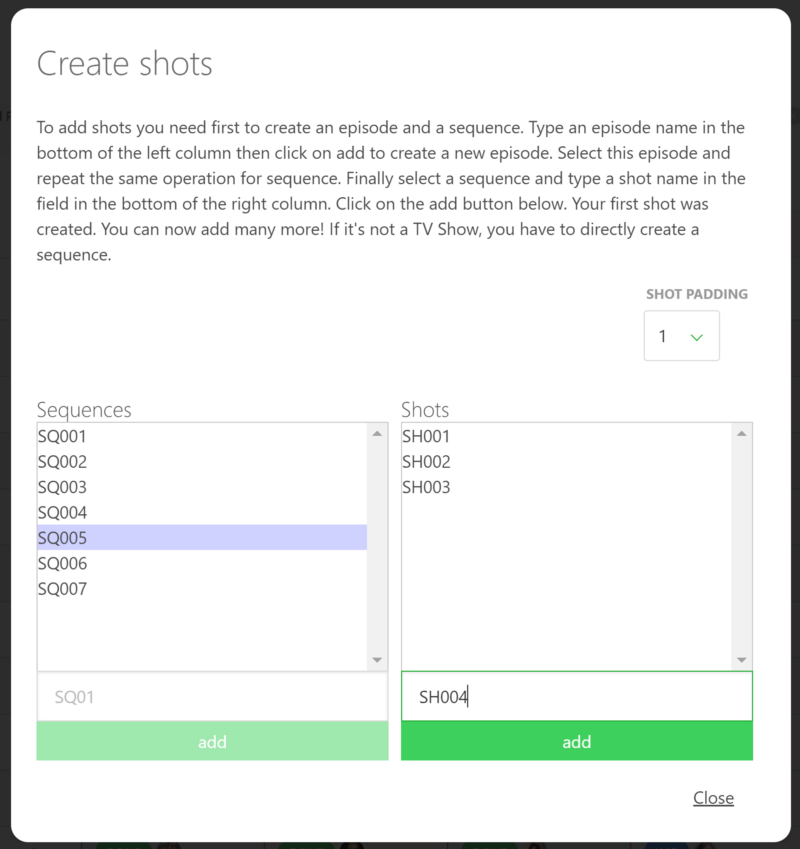
Having a clear naming system and making sure everyone is aware of it will mean that you are all on the same page from the start of the production.
Kitsu allows you to create assets and shots in two ways: either one by one with Kitsu or from a spreadsheet. When creating shots, Kitsu picks up on the nomenclature and increments your shot numbers depending on your chosen padding. It’s always better to really think through nomenclature than renaming everything during the production.
Define pipeline task types
2 Understand all production steps to be done before starting to visualize the production in its entirety.
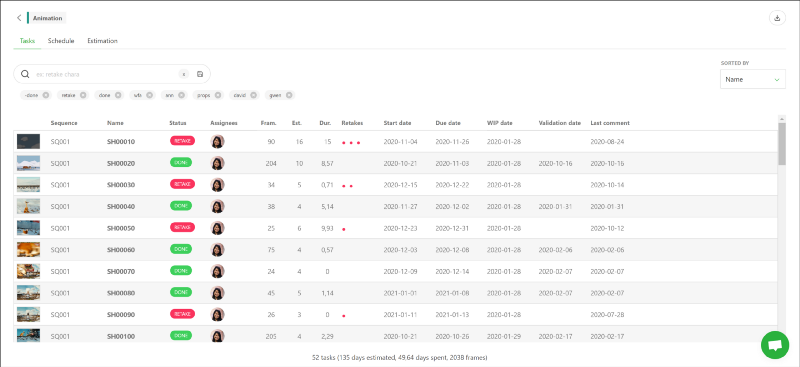
It allows you to be better prepared for any problems that may arise during the production. It often involves switching from one stage to another. Identifying all the steps in Kitsu also helps you define the production schedule and predict the number of people needed at each stage.
Agree on common status vocabulary
3 Define the status labels, and what they represent is an essential step before beginning a production.
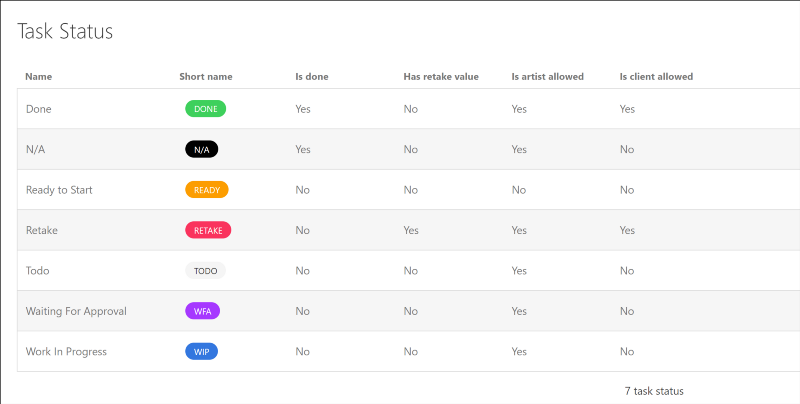
Whether it is to communicate internally or with another studio, it is essential that everyone uses the same vocabulary and understands what a status change implies.
Status changes are the main means of communication between artists, supervisors, and clients. So these statuses must mean something clear to everyone. In Kitsu, you can customize your own status and even give them several purposes, such as validation, retakes, etc.
Set your production
4 Each production is different and needs specific settings.

It is important to identify new productions' characteristics, such as resolution, ratio, FPS, task types, asset types, and statuses used for this specific production.
Kitsu allows you to set what best suits your production and then define a different pipe for each one. This way, your production pipeline won’t be clogged up by unwanted task types, asset type, or status labels.
Create custom filters
5When you need to access information repeatedly quickly.
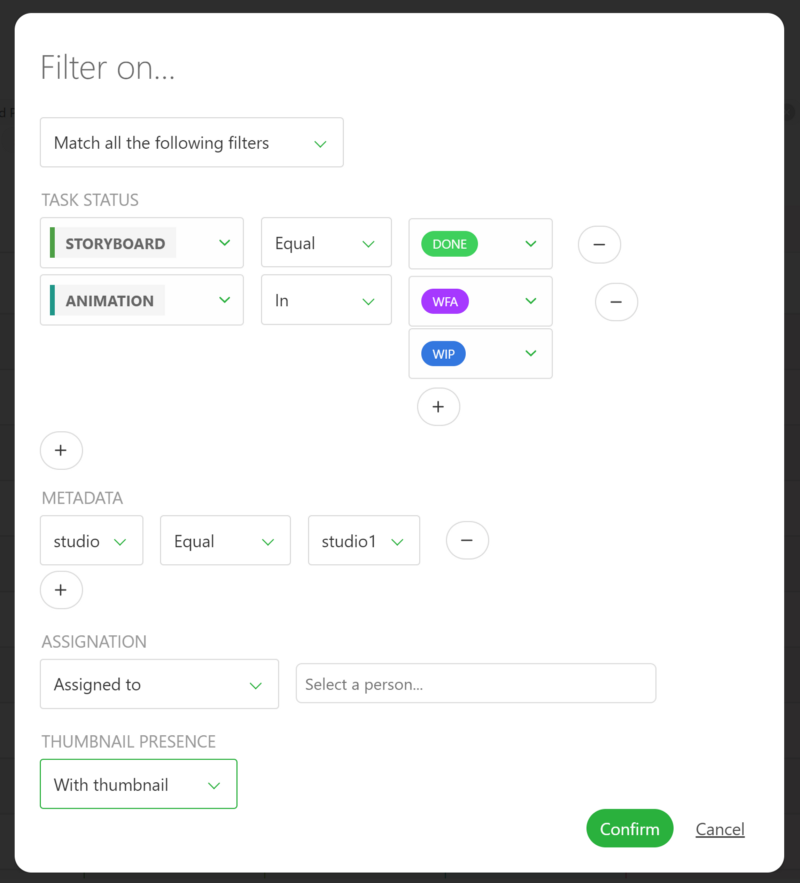
Kitsu allows you to create custom filters, thanks to its filter builder. Once your filter is created, you can save it, rename it and consult at any time. You can create filters in the global shot and asset pages, but also in task pages.
In task pages, you can focus only on the selected task type. You can also keep your filter active between the task list and the planning tab allowing you to focus on a particular status or person.
Use playlists to review faster
6 One of the most recurring steps in production is the review.
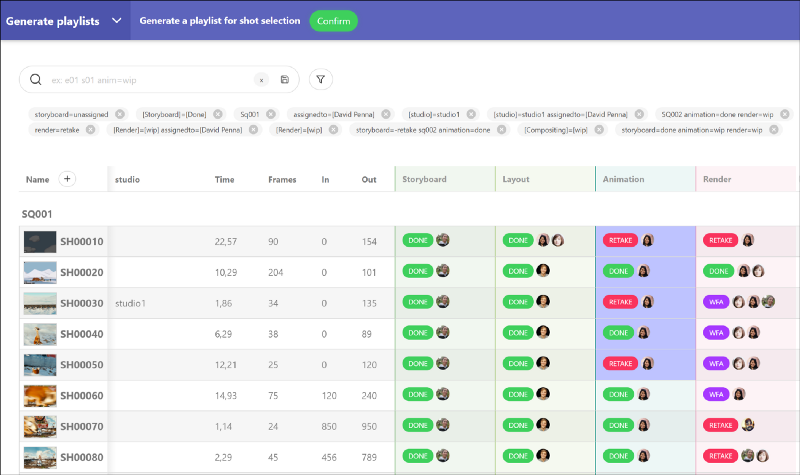
Whether you need to check your plan in context or verify a whole sequence, playlists are there to help you. You can either create a playlist by selecting tasks in the global shots or asset pages or directly using the playlist module.
By creating a playlist, you can access more options than when viewing a preview alone, such as changing the playback speed. From a playlist, you can draw and write your comments and remarks directly in the comment panel, so you can switch the version and status in one single action before continuing to review your selection.
Define estimate date for artists
7 Add an estimated start and due date for each task.

The production schedule should be seen as your guiding document and should be kept in mind to check if everything is planned. To go into detail, go to the task type page. Here, you will be able to enter an estimated duration for the task and a start and end date. These elements are communicated to the artists through their to-do lists.
On the task type page, you can keep an eye on the forecast and the project's actual progress. For this, Kitsu will display your estimate alongside the artist's actual time (once they have filled in their timesheet).
Working in the same way, the estimated start date/end date can be compared to the date of the WIP status change and validation date.
Going further
That’s it for these best practices about starting your production! If you have any questions or feedback about this article, feel free to post them in the comments! You can also check our documentation or our tutorials, you will find many other tips about Kitsu!
We dedicate this blog to CG Production Management and CG Pipeline. Additionally, We propose a Discord channel to discuss your problems/solutions and learn from others. We are already 200+ to share tips and ideas. Join us, TDs and Production Managers from all over the world will be super happy to welcome you!





